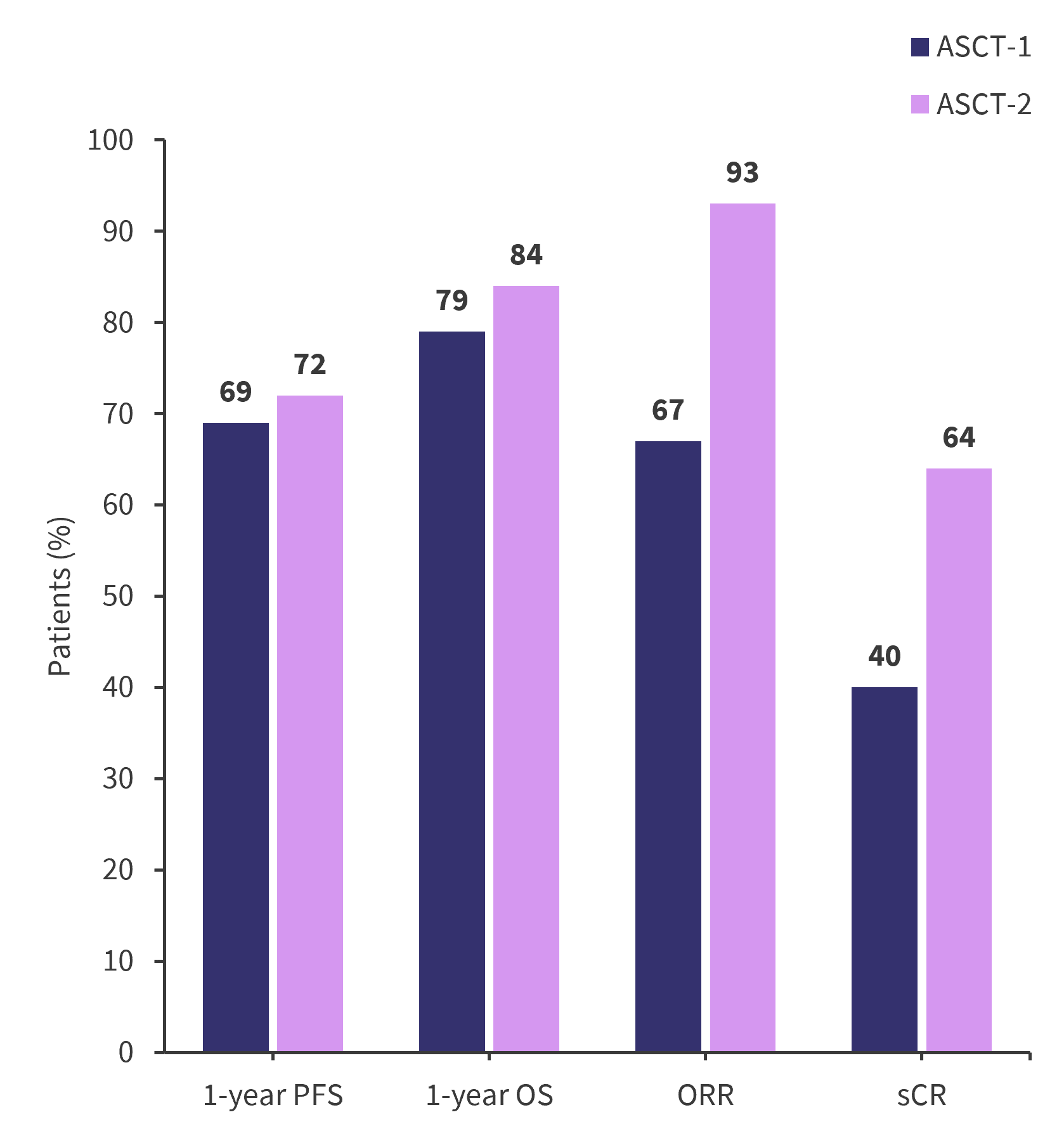All content on this site is intended for healthcare professionals only. By acknowledging this message and accessing the information on this website you are confirming that you are a Healthcare Professional. If you are a patient or carer, please visit the International Myeloma Foundation or HealthTree for Multiple Myeloma.
The mm Hub website uses a third-party service provided by Google that dynamically translates web content. Translations are machine generated, so may not be an exact or complete translation, and the mm Hub cannot guarantee the accuracy of translated content. The mm and its employees will not be liable for any direct, indirect, or consequential damages (even if foreseeable) resulting from use of the Google Translate feature. For further support with Google Translate, visit Google Translate Help.
The Multiple Myeloma Hub is an independent medical education platform, sponsored by Bristol Myers Squibb, GSK, Johnson & Johnson, Legend Biotech, Pfizer, Roche, and Sanofi. The levels of sponsorship listed are reflective of the amount of funding given. View funders.
Now you can support HCPs in making informed decisions for their patients
Your contribution helps us continuously deliver expertly curated content to HCPs worldwide. You will also have the opportunity to make a content suggestion for consideration and receive updates on the impact contributions are making to our content.
Find out more
Create an account and access these new features:
Bookmark content to read later
Select your specific areas of interest
View multiple myeloma content recommended for you
Panobinostat, gemcitabine, busulfan, and melphalan salvage therapy in RRMM
The standard-of-care for patients undergoing consolidation of frontline therapy in multiple myeloma (MM) is currently high-dose melphalan with autologous stem cell transplantation (ASCT). Progression-free survival (PFS) rates were observed to increase with the addition of busulfan (BuMel), and again with the addition of gemcitabine (GemBuMel). Individuals receiving salvage therapy often experience relapse, therefore novel combinations are continuing to be investigated for applicability in these patients.1
Here, we summarize a study published by Nieto et al.1 in American Journal of Hematology on the safety and efficacy of high-dose panobinostat combined with GemBuMel therapy following ASCT salvage in relapsed/refractory or high-risk MM.
Study design1
- Patients with high-risk or relapsed/refractory MM and adequate end-organ function were enrolled into two cohorts depending on whether they were receiving their first ASCT (ASCT-1) (n = 48) or second transplant (ASCT-2) (n = 32).
- Panobinostat was administered orally at 20 mg/day in addition to GemBuMel
- The matched control cohort for ASCT-1 (N = 299), included treatment with BuMel (n = 122) or melphalan (n = 177), and for ASCT-2, included BuMel (n = 19) or melphalan (n = 53).
- The primary endpoint was PFS
- Secondary endpoints included were overall response rate, stringent complete response, overall survival (OS), measurable residual disease (MRD), and toxicity profile.
Key findings1
- At a median follow-up of 51 months, the median PFS of the ASCT-1 and -2 cohorts were 25 months and 32 months, respectively.
- Median OS was not reached in either cohort
- Transplant-related mortality was recorded in two patients in the ASCT-2 cohort, and none in the ASCT-1 group.
- The toxicity profile was deemed acceptable, and not significantly different to the matched control groups.
- In both cohorts, MRD negativity increased following ASCT, with an improvement of 8.5% to 23% in ASCT-1, and 34% to 55% in ASCT-2
- Increased rates of MRD negativity correlated with improved outcomes
- ASCT-1 and -2 cohorts compared with matched controls:
- In both ASCT-1 and -2 cohorts, increased PFS rates were observed compared with the control groups (p = 0.025 and p = 0.04, respectively). More information and data representation can be found here
- OS rates were not significantly different in either of the matched groups
- PFS and OS rates at 1-year post-ASCT, as well as response data are presented in Figure 1.
Figure 1. 1-year PFS, OS, and response rates*

ASCT, autologous stem cell transplantation; ORR, overall response rate; OS, overall survival; PFS, progression-free survival; sCR, stringent complete response.
*Data from Nieto, et al.1
|
Key learnings |
|---|
|
References
Please indicate your level of agreement with the following statements:
The content was clear and easy to understand
The content addressed the learning objectives
The content was relevant to my practice
I will change my clinical practice as a result of this content
Your opinion matters
HCPs, what do you view as the greatest barrier to the use of belantamab mafodotin combinations in clinical practice?



